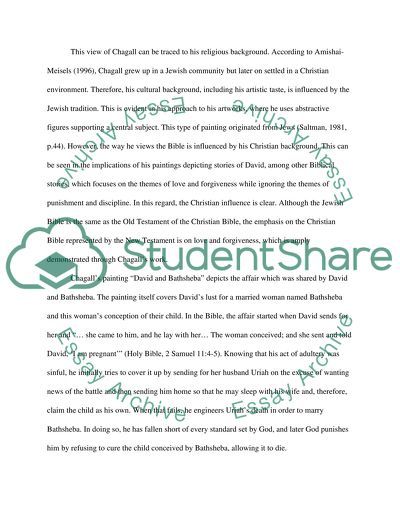Cite this document
(“Do Chagalls Depictions of David Reflect His Intense Religiosity Essay”, n.d.)
Do Chagalls Depictions of David Reflect His Intense Religiosity Essay. Retrieved from https://studentshare.org/miscellaneous/1511038-do-chagalls-depictions-of-david-reflect-his-intense-religiosity
Do Chagalls Depictions of David Reflect His Intense Religiosity Essay. Retrieved from https://studentshare.org/miscellaneous/1511038-do-chagalls-depictions-of-david-reflect-his-intense-religiosity
(Do Chagalls Depictions of David Reflect His Intense Religiosity Essay)
Do Chagalls Depictions of David Reflect His Intense Religiosity Essay. https://studentshare.org/miscellaneous/1511038-do-chagalls-depictions-of-david-reflect-his-intense-religiosity.
Do Chagalls Depictions of David Reflect His Intense Religiosity Essay. https://studentshare.org/miscellaneous/1511038-do-chagalls-depictions-of-david-reflect-his-intense-religiosity.
“Do Chagalls Depictions of David Reflect His Intense Religiosity Essay”, n.d. https://studentshare.org/miscellaneous/1511038-do-chagalls-depictions-of-david-reflect-his-intense-religiosity.


